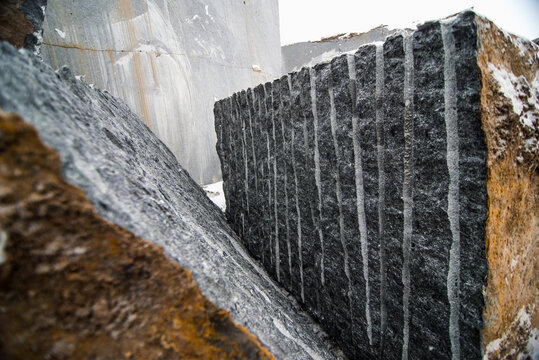Diving into of Granite Quarries in South Africa
Diving into of Granite Quarries in South Africa
Blog Article
Uncovering the Rich History and Lasting Practices of Granite Quarrying
As we stand on the precipice of discovering the detailed tapestry of granite quarrying, a journey through time reveals not simply the physical act of drawing out rock yet likewise the cultural and historic relevance woven into the very textile of this practice. From the old origins that laid the foundation for modern-day quarrying methods to the lasting methods that are shaping the future of this market, each sculpt mark on granite surface areas narrates waiting to be unearthed (granite quarries in south africa). The legacy of granite quarrying extends far beyond mere removal; it is a testimony to human resourcefulness, strength, and the enduring allure of this stunning rock
Ancient Origins of Granite Quarrying
Going back to old civilizations, the method of quarrying granite has been an indispensable part of human background and architectural improvement. The earliest proof of granite quarrying dates back to ancient Egypt, where massive pyramids and detailed sculptures were crafted from this sturdy rock. The Egyptians utilized primitive tools to draw out granite blocks from quarries, showcasing the value of this material in their huge building and constructions.
Relocating forward in background, the Greeks also made considerable contributions to the quarrying of granite. The Greeks used granite in different building wonders, such as temples and sculptures, demonstrating their skill in shaping and sculpting this sturdy rock. The Romans additionally fine-tuned the strategies of quarrying granite, employing sophisticated tools like blades and hammers to essence and form granite for their legendary frameworks.
Via the centuries, the practice of quarrying granite has actually progressed, with contemporary innovations improving performance while maintaining the ageless appeal of this all-natural rock - granite quarries in south africa. From ancient people to modern builders, the heritage of granite quarrying remains to shape our globe
Evolution of Quarrying Techniques
The advancement of quarrying strategies has been noted by a continual progression in the direction of higher performance and precision in extracting granite. Early quarrying techniques involved hands-on labor with fundamental devices such as blades, hammers, and wedges to extract granite blocks from the earth.
In even more recent times, the development of equipment revolutionized the quarrying sector, enabling quicker removal rates and increased productivity. Technologies such as diamond wire saws, high-pressure water jets, and pneumatically-driven drills have actually come to be conventional in modern-day quarries, permitting exact cutting and minimized waste. Innovations in computer-controlled tools and 3D modeling have maximized quarrying procedures, leading to very little ecological influence and improved sustainability techniques. As the demand for granite continues to climb, the advancement of quarrying methods remains important to conference market requires successfully and sustainably.
Cultural Importance of Granite
Granite holds a profound cultural significance throughout various worlds due to its enduring existence in architectural masterpieces and admired monoliths. From the majestic pyramids of Egypt to the elaborate makings of the Angkor Wat holy place in Cambodia, granite has been a material of selection for revealing magnificence and durability in social heritage. In ancient Rome, granite columns decorated temples and public buildings, representing strength and permanence. The social relevance of granite expands past its physical qualities; it personifies durability, security, and timelessness, making this article it a symbol of enduring legacies and traditions.

Sustainable Practices in Quarrying
In the middle of the abundant background of granite quarrying and its social importance exists an expanding focus on sustainable methods within the sector. As ecological awareness and problems regarding source depletion have actually heightened worldwide, the quarrying sector has actually progressively accepted sustainable approaches to decrease its effect on the environment and surrounding neighborhoods.

Moreover, recovery and rehab of quarry websites post-extraction he said are integral to sustainable methods. By restoring quarried locations to an all-natural or helpful state, such as producing wildlife habitats or leisure areas, quarriers can counter the environmental impact of their procedures and contribute favorably to the local ecosystem.
Legacy of Granite Quarrying
With a historical background steeped in workmanship and industrial progress, what withstanding influence has granite quarrying left on the landscape of modern-day culture? The legacy of granite quarrying transcends mere extraction techniques; it has formed architectural wonders, city landscapes, and social heritage worldwide. The resilient nature of granite has actually made it a favored choice for monuments, structures, and infrastructure, standing as a testimony to the ability and artistry of go right here quarry employees throughout generations.
In addition, the financial footprint of granite quarrying can not be ignored. The sector remains to provide job opportunity and drive neighborhood economic climates in areas where granite extraction prevails. It has also stimulated technological advancements in quarrying strategies and tools, causing a lot more efficient and sustainable practices.
In terms of sustainability, the tradition of granite quarrying includes initiatives to reduce environmental impacts with reclamation projects and responsible source administration. By balancing economic interests with ecological stewardship, the industry aims to guarantee that future generations can remain to take advantage of this enduring natural deposit.
Verdict

Report this page